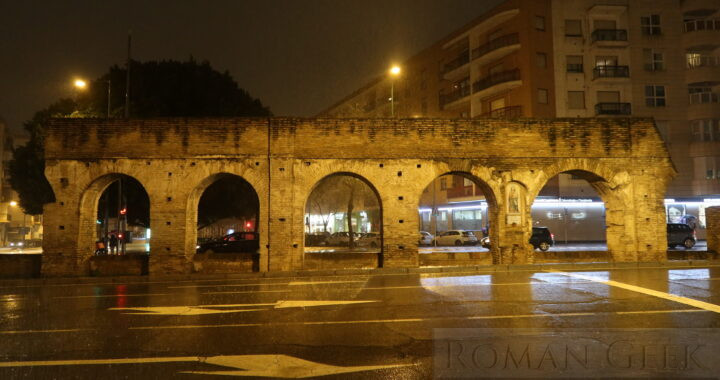- Hispalis was the Roman city which is now Seville in Spain.
- Along with the nearby Roman towns of Italica and Carmona, they were all in the Roman Province of Baetica, conquered in 197 BCE.
History
- Seville was known to the Romans as Hispalis and was in the Province of Baetica.
- Hispalis was an important Roman port city on the river Guadalquiver, along which Goods such as Olive Oil were exported to Rome.
- It was also on the Via Augusta, the strategic Roman Road which ran from Cadiz to Gaul.
- Nearby were two Roman towns, Carmona and Italica, where the Emperors Trajan and Hadrian were born.
- Hispalis grew in importance in the 2nd century CE, after the River Guadalquivir changed its course away from Italica.
Roman Sites
- Aqueduct ‘Canos de Carmona’
- Four arches remain from the 1st century BCE aqueduct.
- Columns of a Roman Temple (possibly dedicated to Hercules)
- Three 30 feet high (9m) granite columns in Marmoles Street.
- Roman Columns
- Located in La Alameda de Hercules, a garden square.
- Two Roman columns were moved from the Marmoles street Roman Temple, and are topped by modern statues of Julius Caesar and Hercules.
- Roman Walls
- reconstructed under the Moors.
Museums
- Archeological Museum of Seville
- Located in Plaza de America, Seville.
- The museum holds the Finds from the Roman Ruins of Italica.
- Antiquarium
- An Archeological Museum located in the basement of a structure known as the Metropol Parasol, in the Plaza de la Encarnacion, Seville.
- It holds Roman Mosaics from: the House of the Nymph, the House of Bacchus, the 10 foot (3m) Mural of the Ocean Courtyard, House of the Column (Medusa and jellyfish mosaic), House of the Bases, the House of Sigma, the House of the Ferris Wheel and the Hospitium of the Dolphins.
Roman Roads
- Via Augusta
- Via Lusitanorum (nearby)
Nearby Sites
- Italica
- Located at Santiponce, 7 miles (11km) to the north of Seville.
- Carmona
- Located 20 miles (33km) northeast of Seville in Andalucia, Spain.
Archeological Museum of Seville

